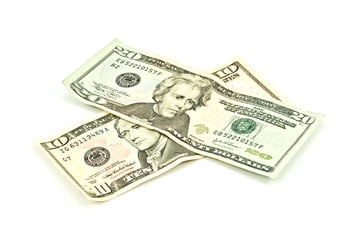Accessible Currency for the Blind

Interesting Facts in Easy English
Pre-Listening Vocabulary
- accessible: able to be used
- visually impaired: people who have low or no vision
- tactile: related to touch
- predominantly: mainly; most noticeably
- wallet: a folder for holding money and cards
- distinguish: to notice a difference between things
Podcast: Play in new window | Download (0.0KB)
Subscribe: Apple Podcasts | More
Accessible Currency for the Blind
Comprehension Questions
- How can visually impaired people identify banknotes in Australia?
- What feature helps blind people identify Canadian currency denominations?
- What did an American court rule in 2008?
Discussion Questions: Some visually impaired Americans say that they are denied jobs because they can’t distinguish between the different denominations of US currency. Is this a form of discrimination? Who is to blame, employers or the government?
show Answers
9 comments
-
English Club Indonesia says:
Visually impaired people identify banknotes in Australia with the sizes and colors of the banknotes. Blind people identify Canadian currency denominations with the raised dots on the corner. An American court ruled in 2008 that banknotes should be friendly and easy to identify by visually impaired people. Some visually impaired Americans say that they are denied jobs because they can’t distinguish between the different denominations of US currency. That is not discrimination to me. We should understand employers like to hire people with required abilities. The government should make banknotes efficiently identifiable.
-
Platina says:
Your site and article is very informative. Please keep sharing with us.
-
Meiji Mo says:
This is a cool site for English learners!
I want to improve my listening skill. it definitely helps. Thx!
-
Mario and luigi says:
not good ok you all eat nasi berak and sing rickroll
were no stranger to love~
you do no the rules~
and so do i to say it~
you no er husbin thinkin of~
you no the game at were go nne play it~
AIIIII to aks me how a feeelin~
gonna make u understand~
never gonna give u up~~
never let u down
never go nee run round and desert your ppooopy~
this essay is suck pls~!!!!!!!!!!!!!!!!!!!!!!!!!!!!!!!!!!!!!!!!!!! -
dmbrom.com says:
Thank you
-
THIS IS SO BAD says:
THIS IS SO BAD WHO EVEN WANTS TO READ THIS
-
anurag singh says:
good
-
Helptheblindman says:
As a parent I imagine what it would be like to raise a blind child. I would want them to purchase snacks, school meals and toys with currency they could understand and be independent. Break my heart, hopefully never to be taken advantage of. I think it would be difficult to give a blind child an allowance unless you paid in coin or single bills only. But who wants to continue through life like that. Wallets with multiple folders or a folding techniques are ok for some but then there’s always human error.
-
Wladimir says:
This is a real problem. It´s so good to appoint and highlight the importance of making accessible currency for the blind, as they need not to depend on other people to handle their own bills.
I´ve been practicing my listening skills in the last few days and these podcasts have helped me a lot. Thanks a lot!